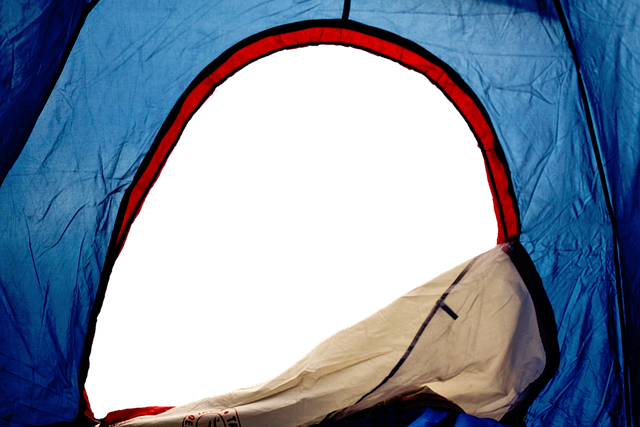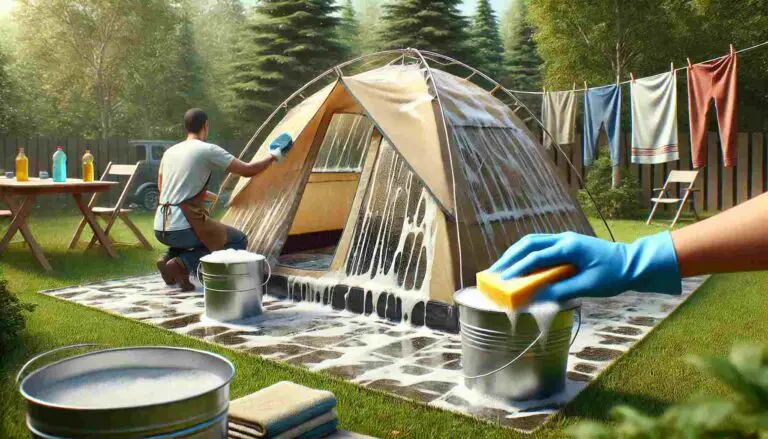When it comes to camping or outdoor adventures, having a good tent is essential. However, before you can start setting up your tent, it’s important to understand the basic parts of a tent. Knowing the different parts and how they work together will help you set up your tent properly and make your camping experience more enjoyable.
In this ultimate guide to tent anatomy, I will cover the essential parts of a tent, including the tent structure, tent poles, tent fly, tent body, tent doors and windows, and tent guy lines and stakes. By the end of this post, you’ll have a better understanding of each component of a tent and how they work together to create a comfortable and safe camping experience. Let’s get to it!
Tent Structure
The structure of a tent is the basic framework that supports the tent. Understanding the structure of a tent is important because it affects how the tent is set up and the overall stability of the tent. There are several different types of tent structures, including A-frame, dome, tunnel, and geodesic. Each structure has its own advantages and disadvantages, depending on the intended use and the weather conditions.
- A-frame tents are the most basic and traditional type of tent structure. They are easy to set up and provide good ventilation, but they are not ideal for windy conditions.
- Dome tents are another popular type of tent structure. They are easy to set up, provide good headroom, and are more stable in windy conditions. However, they may not be as spacious as other tent structures.
- Tunnel tents are long and narrow, with a series of curved poles that create a tunnel-like shape. They are lightweight and easy to set up, but may not be as stable in windy conditions.
- Geodesic tents are the most complex tent structure. They have multiple poles that cross over each other, creating a dome-like shape. They are the most stable type of tent structure and are ideal for extreme weather conditions, but they may be more difficult to set up.
Understanding the different types of tent structures will help you choose the right tent for your needs and make it easier to set up and enjoy your camping experience.
Tent Poles
Tent poles are an essential part of a tent’s structure. They provide support and stability to the tent and determine its shape and size. Understanding the different types of tent poles and how to set them up is important for a successful camping trip.
Tent poles come in different materials, such as aluminum, fiberglass, and carbon fiber. Aluminum poles are strong and lightweight, while fiberglass poles are more affordable but heavier. Carbon fiber poles are the lightest and strongest but are also the most expensive.
There are two main types of tent poles: freestanding and non-freestanding.
Freestanding tents have poles that can stand on their own without the need for stakes or guy lines. Non-freestanding tents require stakes and guy lines to hold up the tent.
To set up tent poles, start by laying out the tent body and identifying the pole sleeves and attachment points. Insert the poles through the sleeves or attach them to the attachment points. Then, lift the poles up and secure them to the ground using stakes or guy lines.
It’s important to follow the manufacturer’s instructions when setting up tent poles, as different tents may have different pole setups. Properly setting up tent poles will ensure the stability and durability of the tent during your camping trip.
Tent Fly
A tent fly is an outer layer that covers the tent body and provides extra protection from the elements. It is typically made of a waterproof and breathable material that prevents rain, snow, and wind from entering the tent while allowing condensation to escape.
There are two main types of tent flies: full-coverage and roof-only. Full-coverage tent flies cover the entire tent, including the sides, while roof-only tent flies cover only the top of the tent. Full-coverage tent flies offer more protection from the elements, but roof-only tent flies are more lightweight and allow for better ventilation.
To attach a tent fly, first, lay the fly over the tent body and align the attachment points. Then, secure the fly to the tent body using hooks, clips, or ties. Make sure to stretch the fly taut to ensure proper airflow and rain runoff. Finally, secure the guy lines and stakes to hold the fly in place.
It’s important to properly attach a tent fly to prevent water from seeping into the tent during rain or snow. A well-attached tent fly will also provide extra insulation, keeping the tent warmer during cold nights.
Learn the truth about tent waterproofing in this article.
Tent Body
The tent body is the main living area of the tent. It provides shelter from the elements and a comfortable space to sleep and relax. Tent bodies come in different shapes and sizes, and can be made of various materials such as nylon, polyester, and mesh.
When setting up a tent, the tent body is attached to the tent poles and/or the tent fly. The tent body may have multiple doors and windows for ventilation and easy access. Some tent bodies also have interior pockets for storage and organization.
Tent bodies can be classified into two main types: single-wall and double-wall. Single-wall tents are made of a single layer of material, which provides both shelter and waterproofing. Double-wall tents, on the other hand, have an inner tent body and an outer tent fly. The inner tent provides shelter, while the outer fly provides waterproofing.
When choosing a tent body, consider the intended use and the weather conditions. Mesh tent bodies are great for warm weather and provide excellent ventilation, while nylon or polyester tent bodies offer more protection from the elements.
It’s important to properly attach the tent body to the tent poles and/or tent fly to ensure the stability and durability of the tent during your camping trip. A well-attached tent body will also provide maximum shelter and comfort while you’re inside the tent.
Tent Doors and Windows
Tent doors and windows provide ventilation and easy access to the tent. They also play a crucial role in maintaining the temperature and humidity inside the tent.
Tent doors come in different shapes and sizes, and can be located on different sides of the tent. Some tents have multiple doors for easy access and improved ventilation. Tent doors may have zippers or velcro closures, and some may have a mesh layer for additional ventilation.
Tent windows also come in different shapes and sizes, and may be located on different sides of the tent. They provide additional ventilation and allow natural light into the tent. Tent windows may have zippered or velcro closures, and some may have a mesh layer for insect protection.
When using tent doors and windows, it’s important to consider the weather conditions. During hot and humid weather, opening the doors and windows can improve ventilation and reduce condensation inside the tent. During cold and windy weather, it’s important to keep the doors and windows closed to retain warmth and prevent drafts.
It’s also important to properly close and secure the tent doors and windows to prevent insects and other unwanted creatures from entering the tent. A well-maintained tent will provide a comfortable and safe environment for your camping experience.
Tent Guy Lines and Stakes
Tent guy lines and stakes are essential for securing the tent and keeping it stable in windy conditions. They also help to prevent water from pooling on the tent fly, which can cause leaks and damage.
Guy lines are cords that attach to the tent and anchor it to the ground. They help to distribute the wind load evenly across the tent, improving its stability. Stakes are used to secure the guy lines to the ground. They come in different shapes and sizes and can be made of aluminum, steel, or plastic.
To properly set up guy lines and stakes, start by identifying the attachment points on the tent fly and/or tent body. Tie one end of the guy line to the attachment point and the other end to the stake. Then, insert the stake into the ground at a 45-degree angle, making sure it’s secure. Finally, tighten the guy line to provide tension and stability to the tent.
It’s important to properly set up guy lines and stakes, especially in windy conditions. A well-secured tent will provide a safe and comfortable camping experience, while a poorly secured tent can be dangerous and uncomfortable. Make sure to check the guy lines and stakes periodically during your camping trip to ensure they remain secure.
Conclusion
In conclusion, understanding the basic parts of a tent is essential for a successful camping trip. The tent structure, tent poles, tent fly, tent body, tent doors and windows, and tent guy lines and stakes all play important roles in providing shelter and comfort during your outdoor adventure.
When choosing a tent, consider the intended use and the weather conditions. Understanding the different types of tent structures and materials will help you make an informed decision. Properly setting up the tent poles, tent fly, and tent body will ensure stability and durability, while using the tent doors and windows correctly will maintain proper temperature and humidity inside the tent. Finally, securing the tent with guy lines and stakes will provide extra stability and protection from the elements.
By following the tips in this guide and understanding the basic anatomy of a tent, you can set up your tent easier and faster so you can have a comfortable and enjoyable camping experience. Always make sure to follow the manufacturer’s instructions and take good care of your tent to ensure its longevity and functionality. Happy camping!







